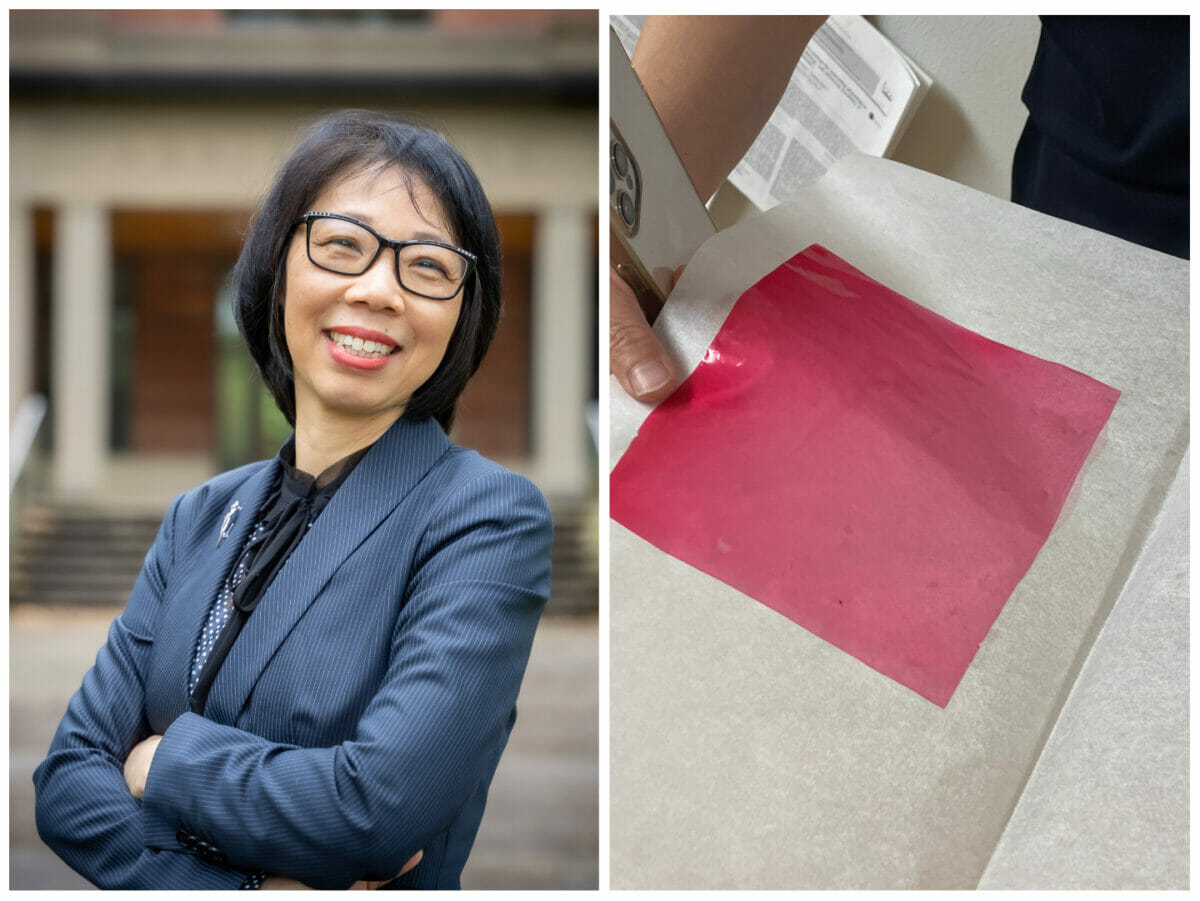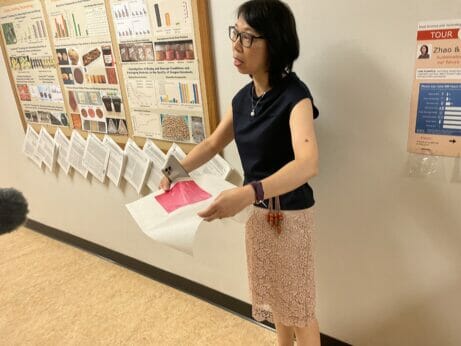The technology to use biodegradable film in place of some plastic or paper packaging is there, say researchers. But first, the industry needs to get on board.

Imagine making a bowl of oatmeal or a cup of instant ramen noodles. You likely rip open a plastic package and fish out the little sachet of desiccant destined to be thrown away before pouring the rest of the contents into a bowl.
But what if you could toss the whole package directly into the bowl with your boiling water, saving yourself a bit of fuss and another piece of waste? Yanyun Zhao hopes we’ll see that option become more widely available soon.
Zhao, a professor of food science at Oregon State University, has researched material compositions and applications since 2008. That’s when cranberries first caught her eye. While visiting a juice company’s production facilities, she spotted the remains of pressed cranberries being carted off to use in animal feed or compost.
But to Zhao’s eye, the squashed berries still had a lot of value as a fibrous substance. “I brought some back to the lab, and in our weekly meeting, displayed it to the students,” says Zhao. She put a challenge out to her grad students and colleagues: What can we make with this? “You can imagine all sorts of ideas we came up with.”
Of all the ideas presented, creating a fibrous film that is edible, no-waste, anti-microbial and water soluble was the one that took off, and Zhao published her first paper on the subject 15 years ago. Since then, she’s continued to tweak and refine the formulation.
The film itself looks like a pale strip of fruit leather. It’s mostly tasteless, although there could be a version with a stronger flavor, as it’s completely edible. It’s made by taking the cranberry pomace—or the residue that’s left over once the juice has been pressed out—and mixing that with other food polymers. “When you’re making this film, you need stretch, you need elasticity, you need a lot of functionalities. So, we incorporate other functional food, like other carbohydrates, a little bit of glycerin,” Zhao explains. The end result is a moveable, stretchable, completely biodegradable film.

Yanyun Zhao displays a piece of cranberry film at Oregon State University. Photography by Emily Baron Cadloff.
The film could someday replace traditional packaging materials, but that’s not the only factor that makes it so appealing. It’s also anti-microbial. The cranberry film can work as a replacement for film plastic, protecting fruits and vegetables with delicate skins, such as English cucumbers. Zhao says there could even be a version of the film strong enough to hold liquids, although that requires more study and experimentation.
Currently, Zhao is working on a version of the natural film that could replace paper cupcake and muffin liners, which actually perform a complex task. The liners have to hold a damp batter without dissolving, and then go into a hot oven without melting or losing shape. “We’ve produced these edible cup liners. You can consume them as part of your muffin or you can peel them off and compost them,” says Zhao. The only real hiccup to mass producing these cranberry-based films comes down to cost. “Since those liners are so cheap, people might not care. I can get 100 cupcake liners for a couple of dollars. But if you’re really sensitive to promoting sustainability, we do have the technology there. We are able to achieve this goal.”
The real test will be if companies and manufacturers are willing to switch up production and packaging standards to incorporate new, environmentally friendly materials. Over the pandemic, as more people ordered takeout, there was a rise in plastic and non-compostable containers, which created more waste for our cities. Before COVID-19, many cities moved towards banning single-use plastics, such as plastic bags, but the pandemic slowed that progress. But as folks are still interested in takeout, some experts think there’s a timely opportunity to update food storage options. Zhao says that’s why industry and researchers should work closely together.
“There’s not a perfect product yet. How can we reduce the cost? How can the formulations and technology more easily scale up through companies?” says Zhao. “But the future is very bright for me, because there’s more consumer education, which is important.” One day soon, you might just bite into your muffin liner or dissolve your instant coffee right in its package. Until then, this might make you look at that Thanksgiving cranberry sauce a bit differently.
I would pay more for take out to cover the cost of these containers!
This is amazing! I can’t wait to see where this goes. What an incredible invention.
This is intriguing!
Can see using the product, but not sure if I would eat it.
What plant is this article talking about? You have a picture of one plant Initially introducing the article Which I think is about another plant but itwhich never explains which plant you’re talking about.